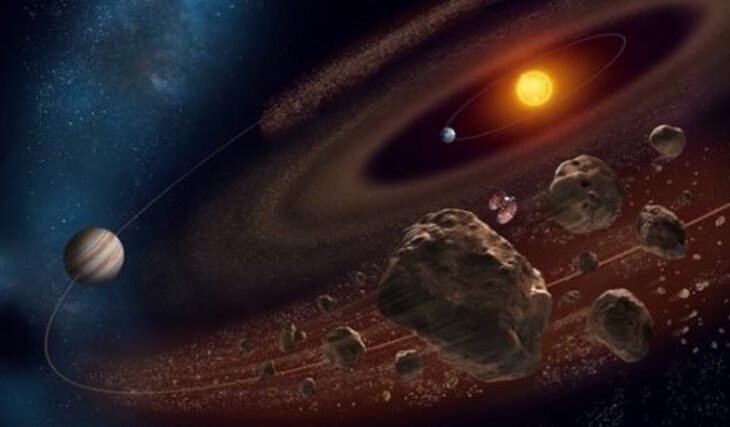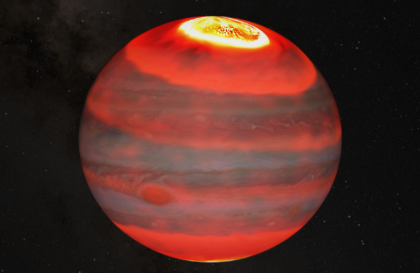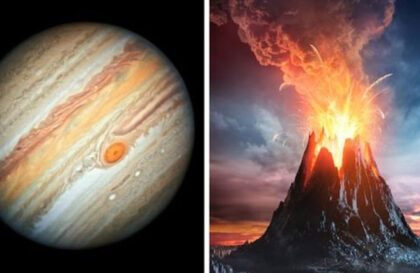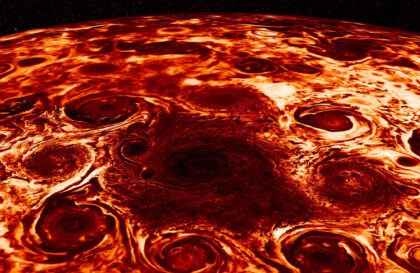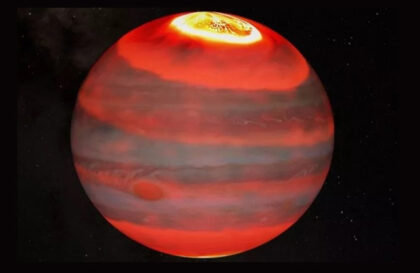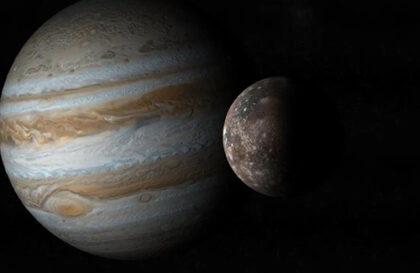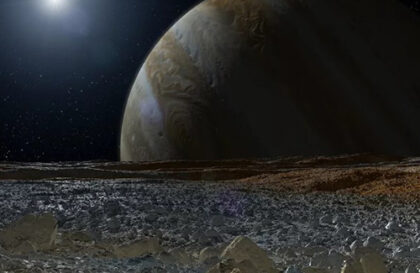The theory goes that Jupiter pushes dangerous comets and asteroids out of their deadly orbits so they don’t crash into the Earth and kill us all, that its gravitational field greedily vacuums hazardous asteroids and comets from the solar system, its gravity wobbles material in the asteroid belt so that space the bodies did not turn into new Ceres.
But let’s look at the facts:
On Wikipedia, the list of meteorites 20+ km in size that fell to Earth has more than 50, more than 200 craters from 30 m to 300 km and their number is growing.
Scientists believe that 5-6 tons of meteorites, or 2,000 tons a year, fall on Earth daily.
Astrophysicists of the Chelyabinsk University, based on the statistics of meteorites and fireballs falling from 1860 to 2018, found out that over the past 100 years, four meteorite falls similar to the Chelyabinsk one in type and size have been recorded, that is, approximately 1 time in 25 years.
Where is Jupiter looking?
But the moon is dotted with impact craters. Only the list on Wikipedia has almost 30 craters over 200 km in diameter. And Chinese scientists using artificial intelligence discovered 109,956 new craters. Some of them are 500 km long and over 4 billion years old. The moon is our protector!
And on Jupiter, for the entire time of observations, only a few flashes from a collision with a meteorite were recorded. So what is the protection of Jupiter for earthlings?
A competing theory says that Jupiter directs comets that pass by into deadly trajectories for Earth.
No one knows how much chaos and destruction Jupiter has caused in its 4.5 billion years in the solar system. If he could not even protect his own satellite Ganymede, which has the largest impact crater in the entire solar system. The diameter of the inner pit is 1380 kilometers, and the diameter of the outer circle is 7800 kilometers. Such a large crater could be formed only in the event of a celestial body falling on Ganymede with a diameter of 150 kilometers. At the same time, the speed of its movement was to be at least 20 kilometers per second.
What happens when Jupiter is behind the Sun?
When the Earth and Jupiter are on opposite sides of the Sun, it does not act as a physical screen. The gravity of the Sun creates gravitational curves along which celestial bodies can move at a significant speed. Jupiter will push them and along the gravitational curve created by the Sun, they can easily fall into the Earth.
What if Earth were a moon of Jupiter?
The shortest distance between Earth and Jupiter is 589 million kilometers. And this happens every 398.9 days – a little over 13 months. The maximum distance is 968,619,032 km. And we don’t see any visible changes.
But what if the Earth comes close to Jupiter at the distance of the moon? The Earth can be compared to the largest Galilean moon, that is, Ganymede, because it is about half the size of the Earth and even has its magnetosphere.
What will happen?
Jupiter’s magnetic field would greatly enhance our aurora, which would be visible anywhere on the planet. In addition, we would observe Jupiter’s aurora.
We would feel the tidal forces of Jupiter. The tides will become more extreme, but perhaps the surface of the Earth will also rise and fall, as happened with Io, whose surface rises a hundred meters. And the height of the ascent depends on the distance to Jupiter (the orbit is not round, but elliptical). Such rises of tectonic plates will cause the strongest earthquakes, the movement of plates will be more active, and volcanic activity and tsunamis will be constant.
The rate of formation and destruction of new continents will be enormous. Maps of the Earth will become outdated within a year, and maybe more often. Tidal forces will lift water on the slopes of hills and mountains, as on Ganymede up to 2,000 feet (600-700 meters). On Earth, this will be observed on a smaller scale, since gravity on Earth is 10 times greater.
Jupiter drains the earth’s rotational energy over time and locks it tidally in place, much like the earth holds the moon.
Jupiter radiates heat that warms four of its 79 moons. The climate on Earth will change. Jupiter’s infrared radiation can turn everything into a desert.
Reflected sunlight would illuminate our entire planet. The night would come on the whole planet (both hemispheres simultaneously) when Jupiter was between the Earth and the Sun, and the day would be on the whole Earth when the Earth would be between the Sun and Jupiter.
The moon will not survive Jupiter’s invasion and will be consumed by it. Solar eclipses will be very long and darker.
If we return to asteroids and comets, then Jupiter “collects” a lot of objects and bodies from space and the asteroid belt because of its huge gravitational field. The likelihood of such objects colliding with the Earth and destroying life will be greatly increased. All four large satellites of Jupiter demonstrate a high degree of impact on foreign bodies, there are many craters on the surface of the satellites.
So does Jupiter protect us or not?
Dr. Kevin Grazer in a new article in Astrobiology has denied the role of Jupiter as a shield for the solar system. His simulations showed that Jupiter and Saturn are actually pointing objects towards Earth.
And the most important role of Jupiter is the delivery of volatile materials containing vital ingredients from outside.
Image credit:
https://www.newsweek.com
https://www.astronomy.com
